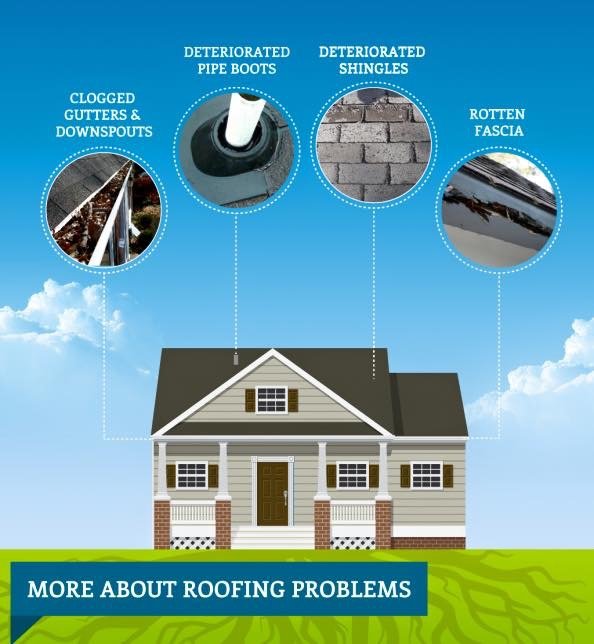Regular Errors In Roof Covering Setup And Techniques To Prevent Them
Regular Errors In Roof Covering Setup And Techniques To Prevent Them
Blog Article
click here to read -Mckee Padilla
When you're intending a roofing system installation, it's easy to forget essential information that can result in significant problems down the line. You might be attracted to cut edges on material selection or skip proper blinking setup, but these typical blunders can cause expensive repair work later on. Comprehending the relevance of ventilation and sticking to local building regulations is important for an effective project. So, what are the essential actions you should take to guarantee your roofing system stands the test of time? Let's check out https://azbigmedia.com/lifestyle/preparing-your-roof-for-summer-heat-monsoon-storms/ to stay clear of these risks.
Poor Material Choice
When it involves roof covering installation, choosing the wrong materials can lead to pricey issues down the line. You could assume that any roof material will do, yet that's an usual misunderstanding. It's vital to select materials that fit your local environment and the certain needs of your home.
As an example, if you reside in an area with heavy rain or snow, choosing asphalt shingles may not be the most effective option. Rather, consider more durable options like metal or slate.
In addition, focus on the high quality of the products you're thinking about. Inexpensive materials might save you cash upfront, but they usually lack longevity and can cause regular fixings or replacements.
You must also think of the style of your home and make certain the products you select will maintain its visual appeal.
Finally, do not fail to remember to talk to specialists. They can supply important understandings and advise materials that abide by regional building ordinance.
Spending time in proper material selection currently can help you prevent headaches and costs in the future, making your roof project a success.
Inadequate Flashing Setup
Selecting the best products isn't the only element that can bring about roof issues; inadequate blinking installation can additionally produce significant issues. Flashing is essential for guiding water away from at risk areas, such as chimneys, skylights, and roof covering valleys. If it's not set up effectively, you run the risk of water intrusion, which can bring about mold and mildew growth and structural damage.
When you install flashing, ensure it's the appropriate kind for your roof's style and the regional climate. As an example, metal flashing is typically more long lasting than plastic in locations with heavy rain or snow. Make certain the flashing overlaps suitably and is protected securely to prevent spaces where water can permeate through.
You should additionally take notice of the setup angle. Flashing need to be positioned to guide water far from your house, not towards it.
If you're unsure regarding the installation procedure or the materials needed, seek advice from a professional. They can help identify the very best flashing options and guarantee everything is mounted properly, guarding your home from possible water damages.
Taking these steps can conserve you time, money, and migraines down the road.
Neglecting Ventilation Needs
While several home owners concentrate on the aesthetic and architectural facets of roof covering setup, disregarding air flow demands can bring about major long-term effects. Proper ventilation is vital for regulating temperature and dampness levels in your attic room, avoiding issues like mold development, timber rot, and ice dams. If you don't mount adequate air flow, you're establishing your roof covering up for failing.
To avoid this mistake, first, examine your home's certain air flow requirements. A balanced system usually includes both intake and exhaust vents to promote airflow. Ensure you have actually mounted soffit vents along the eaves and ridge vents at the height of your roof covering. This combination allows hot air to leave while cooler air enters, maintaining your attic room area comfy.
Likewise, think about the kind of roof covering material you've picked. Some materials may need additional air flow techniques. Ascertain your local building ordinance for ventilation standards, as they can differ substantially.
Lastly, don't forget to inspect your air flow system on a regular basis. Blockages from debris or insulation can hinder air flow, so keep those vents clear.
Conclusion
In conclusion, staying clear of usual roofing system setup blunders is vital to guaranteeing your roofing's longevity and effectiveness. By choosing the best products for your environment, setting up blinking effectively, and attending to ventilation demands, you can protect against expensive problems in the future. Don't neglect to acquaint yourself with neighborhood building regulations and schedule normal evaluations. With these steps, you'll delight in a safe, sturdy roofing system that protects your home for several years to come. Delighted roofing!
